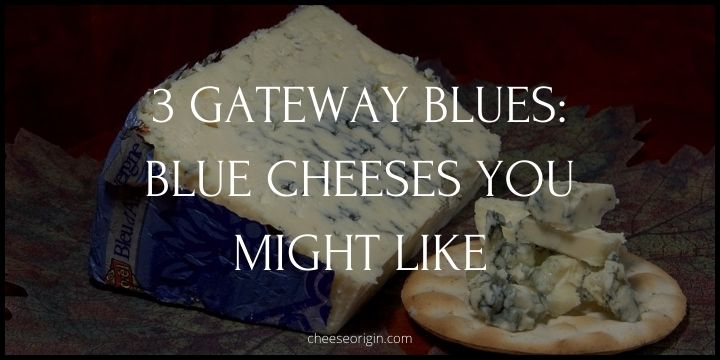What is the Best Cheese for Pizza?

Pizza, a globally loved dish, owes much of its deliciousness to the cheese used. The most commonly used cheese is Mozzarella, known for its excellent melting properties and mild flavor, perfect for a classic pizza.
Provolone is another favorite, offering a slightly sharper taste and also melts beautifully.
Parmesan is often used as a secondary cheese, providing a nutty and salty note, while Gorgonzola, a type of blue cheese, adds a gourmet touch with its strong, tangy flavor.
For a stronger flavor profile, Cheddar is used, especially in pizzas like BBQ chicken.
Lastly, Ricotta’s creamy and mild nature offers a unique texture contrast and is typically found on white pizzas.
Each of these cheeses brings a unique characteristic, enhancing the overall experience.
The 6 Most Ideal Types of Cheese for Pizza
1. Mozzarella:
This is the quintessential pizza cheese due to its excellent melting characteristics, mild flavor, and creamy texture. Fresh mozzarella offers a rich, milky taste, while low-moisture mozzarella has a denser texture and saltier flavor, making it ideal for a classic Neapolitan-style pizza. It pairs well with virtually any pizza topping, including fresh basil, tomatoes, and all sorts of meats.
>> Click here to find out the 12 different types of Mozzarella
2. Provolone:
Provolone offers a slightly sharper flavor than mozzarella, and it melts beautifully. It’s often used in combination with mozzarella for a more complex flavor profile. It pairs well with traditional pizza toppings like pepperoni, sausage, and bell peppers.
3. Parmesan:
Parmesan is typically used as an additional cheese rather than the main one due to its strong flavor. It adds a nutty and salty note to pizzas when sprinkled on top before baking. It’s ideal for thin-crust pizzas or pizzas with rich, robust toppings like prosciutto or arugula.
4. Gorgonzola:
For a gourmet twist, gorgonzola, a type of blue cheese, is a fantastic option. It has a strong, tangy flavor that’s excellent on pizzas with sweet toppings like caramelized onions or figs to balance out the taste.
5. Cheddar:
Cheddar can be used on pizzas that require a stronger flavor, like barbeque chicken pizza. It melts well and adds a sharp, tangy flavor.
6. Ricotta:
Ricotta is creamy and mild, often dolloped on pizza for a distinct texture contrast. It’s commonly found on white pizzas, paired with spinach, garlic, or other delicate flavors.
The type of oven used can also influence the choice of cheese. Wood-fired ovens, for instance, can reach higher temperatures, which can cause some cheeses to burn. Mozzarella is a good choice for this cooking method as it can withstand high heat.
What Cheeses Are Used on Four-Cheese Pizza (Quattro Formaggi)?
A classic Four-Cheese Pizza, also known as Quattro Formaggi, is a delightful blend of cheeses that come together to create a harmonious symphony of flavors.
The traditional cheese combination includes Mozzarella, Gorgonzola, Parmesan, and Ricotta, but variations exist.
| Cheese Type | Description |
|---|---|
| Mozzarella | This cheese forms the base of most pizzas due to its excellent melting properties and mild flavor. It provides a creamy and stringy texture that’s quintessential to any pizza, and it allows the flavors of the other cheeses to shine through without overpowering them. |
| Gorgonzola | This blue cheese brings a strong, tangy flavor to the mix. It adds a depth of flavor and a hint of spice that contrasts beautifully with the creaminess of the mozzarella and ricotta. |
| Parmesan | Parmesan adds a nutty and salty note to the pizza. It doesn’t melt like mozzarella or gorgonzola, but rather it gets slightly crispy when baked, adding a delightful texture contrast. |
| Ricotta | Ricotta is dolloped on the pizza, providing creamy pockets that balance out the stronger flavors of the gorgonzola and Parmesan. Its mild flavor and unique texture make it an essential component of the four-cheese blend. |
These cheeses can be complemented by a simple tomato sauce that adds a touch of acidity to balance the richness of the cheeses. For toppings, consider adding fresh basil leaves after baking for a pop of freshness, or caramelized onions for a touch of sweetness that pairs well with the tang of the gorgonzola.
When it comes to cooking techniques, baking your pizza in a pre-heated oven at a high temperature ensures a crispy crust and perfectly melted cheese. If you have a pizza stone, use it to achieve a pizzeria-like crust at home.
For variations, you could experiment with different cheese combinations based on your preference.
For instance, replace gorgonzola with a milder blue cheese if you prefer less tang, or add cheddar in place of Parmesan for a sharper flavor. A white four-cheese pizza is another delicious option where a garlic-infused olive oil replaces the tomato sauce.
Remember, the key to a great four-cheese pizza is using high-quality cheeses and balancing flavors to create a pizza that’s rich, creamy, and absolutely delicious.
Which is Better for Pizza: Mozzarella vs. Cheddar
Choosing between mozzarella and cheddar for pizza really depends on the flavor profile you’re aiming for. Mozzarella is ideally suited for traditional pizzas where you want a creamy, subtle cheese that allows other ingredients to shine.
On the other hand, cheddar offers a sharper, more robust flavor which can add a new dimension to your pizza. It melts well, but doesn’t quite have the same stretch as mozzarella.
Cheddar is often used in specialty or gourmet pizzas, such as a BBQ chicken pizza. So, the “better” cheese for pizza is subjective and largely depends on the type of pizza and personal preference.
Conclusion
The beauty of pizza lies in its versatility, so don’t be afraid to experiment with different combinations of high-quality cheeses to find your perfect blend.
Whether you prefer a classic Neapolitan-style Margherita or a gourmet four-cheese pizza, the key is in balancing flavors to create a delicious harmony.
Also read:





